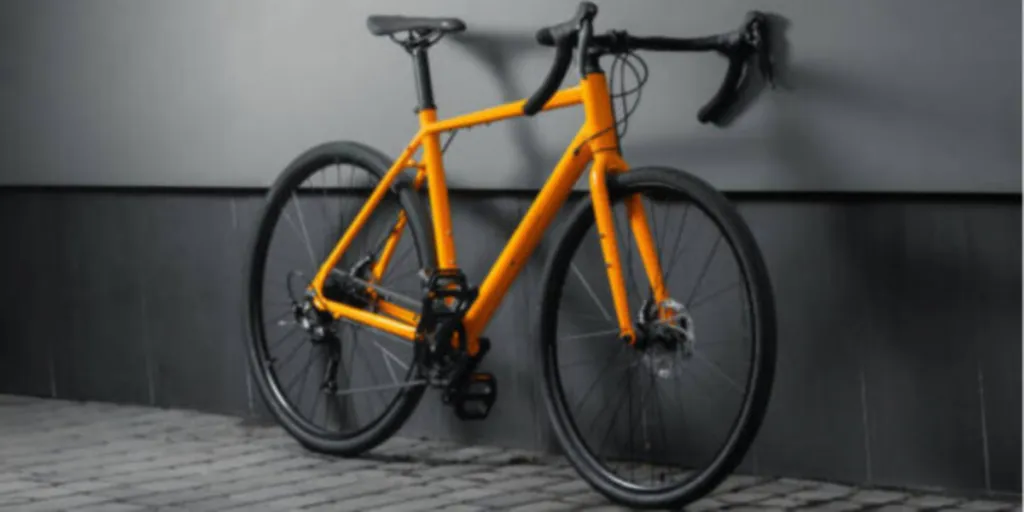Generally, cycling is a great way to explore the adventurous outdoors, minimize carbon emissions, and stay fit. Seasoned cyclists and beginners must choose the right bicycle for their preferred riding experience. However, finding the perfect bicycle can be overwhelming due to the many options available.
Buyers could consider the riding style and the terrain types when selecting a bicycle. This is for comfort for the cyclist and injury avoidance. In this article, more insights and tips are outlined based on the buyers’ needs to find the right bicycle.
The article highlights the overview of the bicycle market share and size. Also, it covers the various bicycle types, their features, and how buyers can ensure they properly fit their bodies. Read on to better understand and enjoy the many benefits of cycling.
Table of Contents
Bicycle market share
Types of bicycles
Tips for selecting the right bicycle
Summary
Bicycle market share
The bicycle market share analysis is segmented by type, design, end-user, technology, and region. Most governments have focused on investing in the development of cycling infrastructure, which has resulted in increased adoption among the population. Also, key players like Accel Group and Hero Cycles Ltd involve e-bike technology to pose competition. The companies are majorly expanding their products to meet the needs of consumers.
According to Fortune Business Insights, the global bicycle market size had a value of about USD 82.50 billion in 2022. It was projected to expand to USD 127.83 billion by 2029. This growth will exhibit a compound annual growth rate (CAGR) of 6.5%. The growth in bicycle demand is ascribed to the increase in the health-conscious populace worldwide.
The hybrid-type segment accounted for the largest market share and is expected to dominate the market during the forecast period. A CAGR of about 6.9% will be registered by road bicycles during the forecast period, while mountain bicycles will have a CAGR of 6.6%. The regular bicycle had the largest share in the design segment. Based on end-user, men led in the 2021 market share and are expected to retain the position. Technologically, the conventional segment registered the largest market share and will still dominate. In addition, the Asia Pacific region dominated the global bicycle market share with about USD 28.86 billion, as cycling is among the major transport modes in Asian countries.
Types of bicycles
1. Touring bikes
Touring bikes are meant for long-distance travel up to multiple days and weeks. They are designed to be comfortable and sturdy, with components that allow riders to carry loads and navigate different terrains. The frames are made of steel, titanium, or aluminum for flexibility, the ability to absorb vibrations, and durability. Touring bikes’ wheels are 700c on average to provide better rolling momentum. They have a wide range of gears to accommodate various terrain. Additionally, the racks and panniers help carry the loads and thus are great for cyclists exploring new places.
2. Road bikes
Road bike designs are efficient and have considerable speed on smooth, paved roads. The bikes are made of lightweight materials and aerodynamic features for speed and easy covering of long distances. Generally, frames are built from aluminum, steel, or carbon fiber. They have narrow 700c wheels that pose lower air resistance. Some road bikes use caliper brakes, and others use disc brakes to achieve good stopping power. They are perfect for racers and riders who want to ride fast over long distances.
3. Cyclocross bikes
Cyclocross bicycles are for racing on mixed terrain, including dirt, pavement, grass, and mud. They are agile and lightweight, with features to allow cyclists to dismount and carry the bicycle over obstacles. Aluminum or carbon fiber makes the frame affordable and durable. Also, they have 700c wheels that are wide and knobby to provide grip on mixed terrain. These bikes have up to 11 gears on the rear wheel for cyclists to maintain cadence while cruising steep hills or navigating technical areas. As such, they are ideal for riders who compete in cyclocross races and enjoy cycling on various terrain.
4. Electric bikes
Electric bicycles have an electric motor powered by a rechargeable battery. There are various e-bikes, including mountain e-bikes, city e-bikes, folding e-bikes, fat tire e-bikes, and cargo e-bikes. The electric motor can be located in three different places on the bike, which are the rear hub, the front hub, and the bottom bracket. The rechargeable battery can be placed on the rear rack, inside the frame, or on the downtube. Most e-bikes have the pedal-assist, which engages the motor as the rider pedals. These bikes suit riders who intend to enjoy riding without much effort against the wind or uphill.
5. Mountain bikes
Mountain bikes are meant for off-road cycling, especially on rough terrains like rocky paths, trails, and steep hills. They have strong, durable frames and suspension systems, and the tires have aggressive treads for better traction and stability on rough terrains. The frame material is usually carbon fiber or aluminum. The wheel size ranges from 27.5 to 29 inches, and the brake type is a disc or rim. Riders who love challenging biking sports would opt for mountain bikes.
Tips for selecting the right bicycle
1. Cost
Buyers must determine their budget as they decide to acquire a bicycle. On average, bicycles range in price from less than USD 100 to over USD 10,000. Considering their needs, buyers can decide how much they will spend. They should look for quality components like gears, brakes, and suspension systems. These features affect durability and performance. They should also test ride before purchasing to check for comfort and proper fit. This helps buyers avoid unnecessary expenses and bicycles they would not enjoy riding.
2. Type
While buyers seek to find the right bicycle, they should consider the several types and models available based on their needs. Road bikes are designed for speed and are efficient on smooth roads. They are suited for racing and long-distance rides. Mountain bikes cruise well on off-road riding and can handle rough terrain. Hybrid bikes are a mix of road and mountain bike features and can handle various riding conditions. Additionally, electric bikes have gained popularity as a way to ride for leisure. Lastly, touring bikes are suitable for carrying loads and navigating different terrains.
3. Brake system
In this case, buyers must start by considering the type of riding and other personal preferences. Rim brakes are the most common brakes used on bicycles. They squeeze the brake pads against the wheel rims. Disc brakes function by squeezing brake pads against a disc attached to the wheel hub. They provide better-stopping power and are more reliable in muddy and wet conditions. Coaster brakes are used on cruisers and kids’ bikes. They work by backward pedaling to engage the brake. Additionally, drum brakes are less common and used on some utility and cargo bikes. They press brake shoes against the inside of a drum attached to the wheel hub.
4. Size
Choosing the right bicycle is essential for comfort, safety, and performance. Buyers should measure their inseam—the distance between the ground and the crotch. It gives the ideal measurement of the frame size needed. They should also check the standover height—the distance between the ground and the top tube of the bicycle frame. This ensures some inches of clearance between a rider’s body and the bike when they straddle. The reach and stack measurements could give buyers an idea of the bike’s height and length. Also, the handlebar and stem length offer an overall fit for the bike.
5. Gearing
The right gearing system depends on the terrain and the kind of riding buyers plan to engage in. Flat terrains require a bike with fewer gears than one used in climbing steep grades. Different types of bikes have different gearing. Road bikes have more gears than hybrid bikes, while mountain bikes have wider ranges of gears. The chainrings and cassette are the main components of the gearing system. Bikes with more cogs on the cassette and chainrings allow for a wider range of gear ratios. A typical bike has a range of 7 to 30 gears.
6. Wheels type
Wheel types impact efficiency, comfort, and riding needs, so different types of riding need different wheel types. Paved roads require bikes with skinny, narrow rims and high-pressured tires. Off-road biking, like mountain biking, requires bikes with wider tires and sturdier rims. Small wheels are easily maneuverable compared to larger wheels which provide better stability. Buyers should also consider the materials used on the rims and the brake system.
7. Durability
The durability of bicycles is dependent on the regular activities that they will be involved in, for instance, touring, racing, commuting, and leisure riding. High-quality materials like titanium, aluminum, and carbon fiber make the bikes more durable. The frame design affects a bicycle’s durability as it withstands pressure and stress. Buyers who like off-road riding should select bikes with more study tires and suspension systems to ensure their durability. Also, a good warranty is a sign the bike will be durable.
Summary
Choosing the right bicycle is vital for enjoyable and comfortable cycling experiences. The above-mentioned tips in the guide should help buyers acquire the bicycle that properly fits their needs. Both casual and seasoned riders must conduct the relevant research to select the perfect bicycle. To find quality bicycles, visit Alibaba.com.




